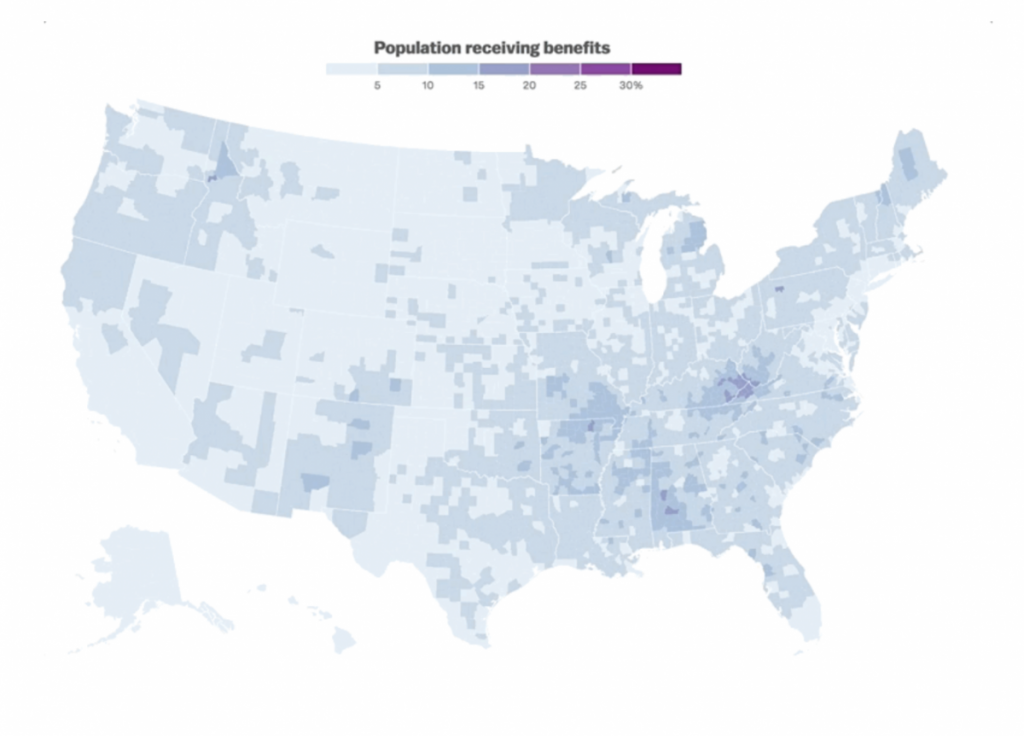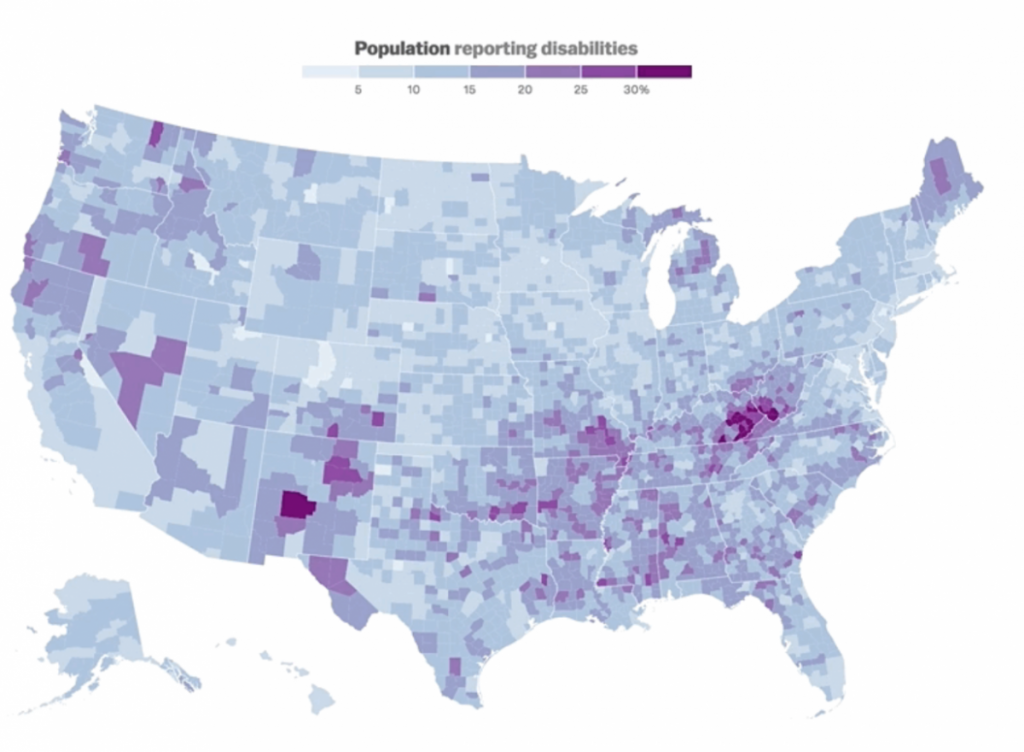This is not an easy question to answer. Since we defined disability using the SSDI’s definition, we use data on SSDI disability reporting and benefit-receiving to gauge how “honest” Appalachia is. If Appalachia has a culture of cheating the welfare system, its disability reports would be disproportionately high relative to its rate of receiving benefits, as more people whom the government deems not disabled would try to get disability benefits. If Appalachia has a similar culture to the rest of America but has a higher rate of disability, its ratio of disability reports to benefits-received would be comparable to the rest of the country.
In the following graphics, we see that Appalachia has some of the highest rates of receiving disability benefits, with some places in New Mexico, Idaho, and Missouri having comparable rates. Next, we see that these regions have similar levels of reporting disability. Thus, among places with high rates of disability, Appalachia reports disability at a similar rate. Across the nation, the rate of receiving benefits roughly corresponds to the rate of reporting benefits and vice versa, such that no region seems to be more “honest” than others.
Thus we see that the “Disability Belt” is not caused simply by a culture of “welfare cheats”, but that the region has a higher rate of disability (both reported and as evaluated by the federal government). What could be causing this? In the following sections, we see how opioids and the coal industry contribute to disability.

